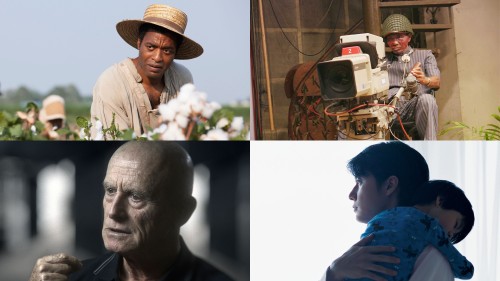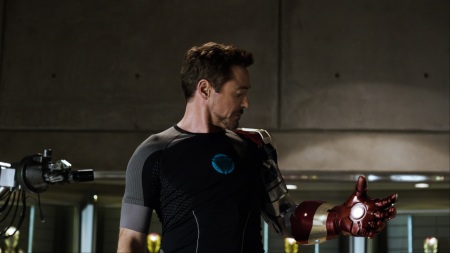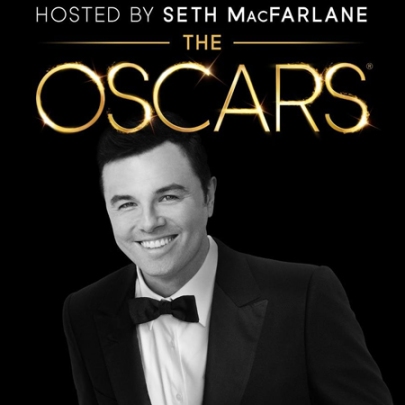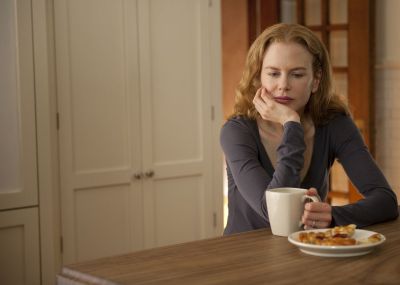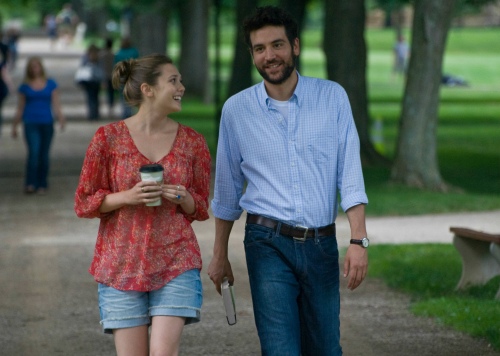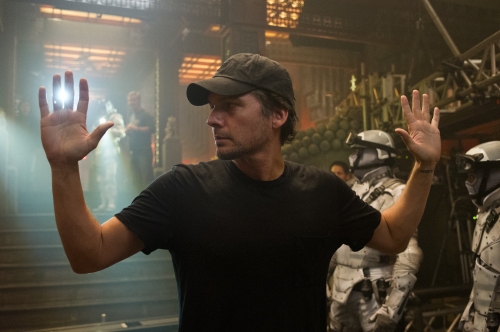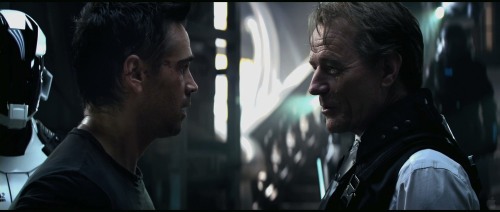Where did 2013 go? It seems just yesterday we were gearing up for Spielberg to walk away with all the Oscars; and like that, it was gone.
2013 was a mixed bag of tricks. The young masters of world cinema and the heroes of the American indie scene did not disappoint their fans, but Hollywood choked on a phlegm of sequelitis and rebootulosis and dumped the worst serving of misguided blockbusters and bland comedies we’ve seen for years. You can’t have your cake and film it.
But you ignore the lows, because you forget about them; your Star Trek Into Darknesses and your final acts of Man of Steel. You remember that this is the year the Coens brought out Inside Llewyn Davis, that Woody Allen made Blue Jasmine, that Martin Scorsese released his best film since Goodfellas.
Gravity showed us that there is still spectacle in cinema, and things we have never seen or experienced are out there to enthrall us. Elsewhere, Oblivion proved that sometimes it’s nice to see all the things you’ve already seen but rearranged in different orders.
More than any in recent memory, 2013 was the year of the documentary. Largely due to Netlfix Instant and HBO Go, docs have become common viewing for a much wider range of audiences, and in many ways the form is developing away from the cheap manipulative techniques that reality TV has coveted and coopted. From The Act of Killing and Stories We Tell, to simpler but affecting films such as Blackfish, the documentary has proven itself the genre (is it a genre? Is it a medium unto itself?) of 2013.
Television changed also. Netflix reinvented the boxset by releasing whole seasons of brand new shows at a time, starting with House of Cards, before bringing out Hemlock Grove, Orange Is the New Black and the lazarused Arrested Development. Thankfully the big players kept up, with the year’s biggest show, Breaking Bad, drawing itself to an all-too-tidy but utterly satisfying conclusion. As rumours flit that Steven Spielberg is to turn the unrealised screenplay of Napoleon begun by Stanley Kubrick into a TV miniseries, the question of how quality television and cinema separate themselves may become the key one of the next few years. Although compare Marvel’s Agents of SHIELD to Iron Man 3 and you can see we’re still not quite there yet…
Twice this year I found myself aboard an airplane bound for dramatic new adventures in cinephilia. The first came in May, when I attended the Cannes Film Festival on behalf of Film Ireland (full reenactments of that event can be found here). There I forged some new friendships (and solidified formerly Twitter-based ones) and bathed myself in film and espresso. If that was a life-defining trip, my next was a life-changing one. Packing my bags once again for America, I returned to New York City where I enrolled (and according to my grades remain) in the Moving Image Archiving and Preservation programme at NYU’s Tisch School of the Arts. I have committed myself now to my passion for film and its history, and the maintenance of its cultural and historical relevance. And here I stay. On the side I kept up my work for Film Ireland while expanding my writing by scribbling for NextProjection.com. I also increased my podcasting presence with several more recordings for The Film Show. OK, so maybe the Cannes thing was the highlight…
In terms of my non-contemporary film viewing, 2013 was not my most successful year. Certainly I finally watched some greats, including Kwaidan, Los Olvidados, Sansho the Bailiff and Short Cuts, while finally finishing off the Dekalog and binging on the entirety of the Fast & Furious franchise, which had utterly escaped me until this year. On the big screen I caught The Age of Innocence, Les Amants, The Enigma of Kaspar Hauser, and The Great White Silence, as well as a joyous screening of Miami Connection. I discovered a heretofore-unknown passion for seeing films in cinema theatres with names related to the film – catching Julie Taymor’s Titus in MoMA’s Titus 1, and Creature from the Black Lagoon in Film Society’s Gilman Theater. On Ozu’s 110th birthday (and the 50th anniversary of his death), I ripped some time out of a bloated schedule to see Equinox Flower on the big screen. It’s the little things, really.
Making my top 20 was difficult this year. As in previous years, my splitting my time between two sides of the Atlantic complicated matters in terms of release schedules. Cannes also complicated matters given the number of often excellent films I saw there, although I have chosen not to include any of these films that did not see release in either Ireland or New York before December 31st. Big films I missed include Fruitvale Station, Her, The Grandmaster, and Museum Hours.
As an aside, whereas the last three years I have awarded 5 out of 5 to a strict average of four films, this year six made that list, making my top six very easy to iron out. The rest was complicated. Near misses include Reality, Wreck-It Ralph, Prisoners, McCullin, Nebraska, Jiro Dreams of Sushi and Beyond the Hills. Special note should be given to a number of formally impressive or experimental films that impressed hugely but let themselves down too greatly in terms of acting, dialogue or coherence, particularly Spring Breakers, Stoker, Escape from Tomorrow and Upstream Color.
Now, on with the show.
20. Caesar Must Die
The grand old brothers of Italian cinema, Paolo and Vittorio Taviani, have produced one of the most troubling docudramas in recent years with Caesar Must Die. Blending fly-on-the-wall documentary techniques with reenactments of rehearsals and performance of Shaespeare’s Julius Caesar, but within a maximum security prison and by the inmates, Caesar Must Die looked at life imitating art and the healing powers of performance and creativity. Lines blurred between reality and fiction, and natural angers and sadnesses leaked from these terrible men in a manner you could hardly expect to witness elsewhere.
19. I Wish
Not the last film on this list by Hirokazu Koreeda, perhaps the most talented filmmaker working today, I Wish looked at the world through the eyes of two young boys, played by real-life junior comedian brothers Koki and Oshiro Maeda, who each choose a different parent to live with when their mother and father separate. Simple, but utterly to the point, it revelled in the joys of childish dreaming.
18. Drug War
A truly unexpected gem of a movie, in the style of classic Michael Mann, Johnnie To’s Drug War teamed a do-anything-to-survive meth manufacturer with an impossibly resourceful top cop to take down a drug empire. The resulting stings and double-crosses, combined with shoot-outs that were so oddly choreographed they felt chaotically believable, made for a tight, twisty and utterly entertaining thriller.
17. Iron Man 3
The only summer blockbuster on this list, Iron Man 3 finally got the right balance for the character of Tony Stark (Robert Downey Jnr.). This time we found him in the aftermath of the superb The Avengers, suffering PTSD from his near-death experience in its finale while also falling victim to an enormous ego-crushing at realising all his science smarts were nothing in a universe of gods and aliens. The villain was relatively typical, although in Ben Kingsley’s the Mandarin writer/director Shane Black found a hugely inventive number 2, the girl got to wear the super suit for a change, and Stark had to deal with being just an ordinary (brilliant) man in the second act with some superbly judged comedy and drama. The final action sequence was messy, but the ideas were all in the right place.
16. Blue Jasmine
Woody Allen, working of late in critical peaks and troughs, hit the highs again with this crafty reworking of A Streetcar Named Desire for the post-psychiatry age. Cate Blanchett dominates the screen as the tragic Jasmine, whose bipolar personality echoes the two poles of her life, as she falls from Manhattan socialite Bay Area unemployable when her unfaithful husband (Alec Baldwin) is revealed to be just as big a financial cheat. Allen’s script was loaded with delicious ironies delivered by Blanchett, while also creating a host of juicy supporting roles for solid character actors such as Sally Hawkins, Louis CK, Bobby Cannavale and Michael Stuhlbarg.
15. Gravity
A pulse-pounding disaster movie like none other, Gravity took inspiration from 2001: A Space Odyssey and recent first-person video games to create an out-of-world experience that was truly thrilling and suitably dizzying. With a remarkable sound design and (mostly) unobtrusive score, Alfonso Cuarón’s film used the most astonishing special effects (and 3D effects) ever seen on screen before to invoke the terror of a storm of metal ripping through orbiting space stations. Sandra Bullock and George Clooney gave fine performances as the unfortunate space travellers, but it was the script – its clumsy dialogue and infantile religious metaphors – that denied this incredible production the title of modern classic. A near masterpiece, but a remarkable film nevertheless.
14. Le Passé (The Past)
Following on from his sublime A Separation, Asghar Farhadi’s Le Passé looks at the drama that arises in the years following a similar divorce and emigration case. Here an Iranian man returns to France to finalise proceedings with his soon-to-be ex-wife, where he becomes embroiled in her relationship with a new man while reconnecting with her children, his one-time step kids. It’s an untraditional tale of familial secrets and lies, told with remarkable restraint and with a knock-out ending. In the lead roles, Ali Mosaffa, Bérénice Bejo and Tahar Rahim all elevate the material to greater heights.
13. To the Wonder
Lesser Malick is still better than most. The Texan philosopher brought his lens from the overcast steps of Mont St. Michel to the sunlit fields of Oklahoma, taking in suitably stunning imagery in airy, sweeping movements. Drawing an excellent performance from Olga Kurylenko as a woman torn apart by love, the film failed to reach the heights of Malick’s earlier works. While it neither bore the dramatic punch, nor laid out the same emotional depth of say The Tree of Life, it remains a startling and beautiful work to behold. It made spinning look as wondrous as Gravity made it look terrifying.
12. Cutie and the Boxer
Some times documentary filmmakers get lucky with their subjects as events shift the focus of the story, but this can hardly count against the filmmaker. Zachary Heinzerling got very lucky with this film about New York-based Japanese artist Ushio Shinohara and his underappreciated wife and unknowing muse Noriko. Being able to tell the story of their tragicomic relationship through Noriko’s art, which is newly reemerging just as Ushio enters his autumn years. A retrospective of his work allows for introspection of their selves and their relationship, as Noriko is given a coinciding exhibit of her own. Astonishingly personal and poignant filmmaking, featuring perhaps the greatest scene played over by the closing credits ever.
11. Before Midnight
Richard Linklater’s romantic odyssey continued the tale of Jesse and Céline another nine years after we last saw them probably turning their lives upside down to be with one another. Now together, with two children, and with his success overshadowing hers (recommended double-bill with Cutie and the Boxer), the couple has a make-it or break-it day during a holiday in Greece. The writing is as natural as it was in Before Sunset, with Ethan Hawke and Julie Delpy once more giving superb, believable performances. It doesn’t hit with quite the same punch as Sunset, largely due to an inconsistent visual aesthetic, but it’s a wonderful and powerful follow-up that shows that romance doesn’t die as couples get older, but it becomes much, much harder to fight for.
10. Inside Llewyn Davis
One of my worst experiences of 2013 was waiting in a press queue at Cannes to see the Coens’ latest, only for us to be denied access to the over-subscribed show. The heat and sweat and crushing were unbearable, but worse was the thought of not getting to see the film. OK, in fairness I saw it two days later and the U.S. didn’t get it for another five months, but anyhow. A melancholy mixture of many Coen themes shot in haunting, dispiriting winter greys, Inside Llewyn Davis is somewhat of another masterstroke by the brothers. Oscar Isaac gives a remarkable lead performance, backed by a fine assemblage of Coen oddballs, and the character’s introspection is carried beautifully, accompanied by music perfect for capturing that spirit of early ’60s Greenwich Village. Only the semi-successful literary flourishes stand against it, and even then only barely. A bleak but powerful drama.
9. The Wind Rises
“The wind is rising, we must try to live.” Hayao Miyazaki’s supposedly (and undeniably suitable) final film is an ode to the reasons the artist creates, in the mold of Andrei Rublev. The film animates the real life story of Jiro Horikoshi, a flight-obsessed young man whose weak eyes would never let him fly, so he turned to plane design, ultimately creating the Zero fighter, the pride of the Japanese airforce during World War II. A film as much about love and loss as it is about art and war, The Wind Rises is a gentle, gorgeously drawn film that never patronises its audience or its characters. It overstays its welcome in the closing 20 minutes, but it remains a tremendous feat by the greatest living master of animation. In addition to the visuals, the sound design is astonishing – when an earthquake tears through Tokyo the soundtrack is of a guttural chant, as if the earth itself was groaning an assault on the people of the city. A remarkable work.
8. Frozen
Teaming Tangled’s director Chris Buck with Wreck-It Ralph’s writer Jennifer Lee proved a glorious victory for Disney, who have suddenly snatched back the animation crown from their underlings at Pixar. Retelling Hans Christian Anderson’s The Snow Queen with remarkable flair, superbly composed (and lyricised) songs, rich humour and a female-dominant storyline, Frozen was one of 2013’s biggest (and most successful) surprises. The animation was not always flawless, but when it looked its best (during the unsurpassable showstopper ‘Let it Go’, for example) it was beautiful to behold, and the film’s energy was electrifying. It also managed to make an animate snowman not only work dramatically and comically, but actually warm the heart too. Some movies are worth melting for.
7. The Wolf of Wall Street
Hitting harder than Ushio Shinohara at a canvas, Terence Winter’s screenplay, based on the autobiography of Jordan Belfort, is an hysterical and terrifying ride through the corridors of financial scheming and market manipulation. At times fuelled as if by the drugs its antiheroes consume, this Martin Scorsese picture may lack the visual flourish we expect of the director, but he has rarely handled a cast this efficiently, and never been so assured in his use of Leonardo DiCaprio, who gives the performance of his career thus far. At times unbearably nasty and perhaps a little enamoured of its subject’s gusto (if not his actions), it has a hell of a lot to say about American greed and the cruelty of the capitalist system at its very worst.
6. A Field in England
One of the most exciting and consistently surprising filmmakers around today, Ben Wheatley brought out his most challenging work to date in 2013, an English Civil War drama that went right through the looking glass. A demonic Irishman forces a motley crew of Englanders to dig for unspecified and uncertain treasure, only for reality and minds to split to asunder. Startling monochrome cinematography, viciously black comedy, and utterly game performances made for a psychedelic whirlwind of a picture. Screenwriter Amy Jump created a ferocious villain in O’Neill, and in the character of Friend, one of the greatest idiot savants in modern fiction.
5. The Gatekeepers
“In the War on Terror, forget about morality.” This is the defeatist mantra by which the former heads of the Shin Bet, Israel’s counter-terrorism unit, barely excuse themselves. This incredible documentary probed the founding of the Shin Bet and its execution of some incredible assaults on terrorist cells (including some monumental failures). Interviews with six former heads of the agency, each clearly affected by their time with the finger on the button, gave unprecedented insight into the difficulties faced by these men, and assertively questions the decisions they have made. Accompanying footage of atrocities, riots and counter-terrorism methods in action are more troubling than anything Hollywood has yet produced on the subject.
4. 12 Years a Slave
The story of Solomon Northup, an educated black man in the 1840s kidnapped and sold into slavery in the American South, was brought to life with the extraordinary visual assuredness of Steve McQueen and his cinematographer Sean Bobbitt. The period detail falls secondary to the extraordinary camerawork, gently filming the lakes and cotton fields that surround the plantation, or making a steamboat’s paddlewheel appear more threatening than any imaginable horror. An unending hanging is shot from a restrained distance, and life is seen to carry on as normal behind it; an astonishing comment on the system that existed in the South. Eschewing explosive Hollywood drama in favour of natural terror and human cruelty, 12 Years feels as painfully real as it looks beautiful. In the lead role, Chiwetel Ejiofor proves himself a remarkable talent, but it is McQueen’s judgement of each scene that truly propels this film towards greatness.
3. Like Father, Like Son
Hirokazu Koreeda’s most recent inspection of a family in crisis is perhaps his most melodramatic, with a plotline that could be taken from a made-for-TV movie. Two families, one upper-middle class, the other working class, discover their six-year-old sons were switched at birth; spurned on by traditional Japanese values they agree to swap boys on a trial basis. The film views the whole gentle tragedy from the point of the middle-class dad (Masaharu Fukuyama), torn between biological assumptions and shame at the breakup of his family. Koreeda judges every scene to perfection, revelling in the spontaneous performances of his child actors (Keita Ninomiya and Shôgen Hwang), gently tracking his camera alongside the painful human drama. As touching as any film could hope to be.
2. The Act of Killing
Perhaps the most formally inventive documentary ever shot, director Joshua Oppenheimer dared to challenge the perpetrators of war crimes during conflicts in Indonesia in ’65-’66 to make short films based on their experiences. These hero gangsters, icons to many contemporary Indonesians, are exposed to be deeply haunted by their acts 50 years ago, no matter how steely their dispositions. Blending camp fantasy with gory reenactments, the film is never better than when it films Anwar Congo, sitting with his grandson in the comfort of his own home, watching a film of himself playing one of his own torture victims, and revealing the collapse of an ideal in the lines of his face and the tremors of his voice. What it says about the conflict, the victims and killers, is unfathomable. But what it says about cinema and its ability to heal and bruise and cleanse is somehow even deeper still.
1. Blue Is the Warmest Colour (La Vie d’Adèle – Chapitres 1 & 2)
Nothing hit harder this year than the life of young Adèle (Adèle Exarchopoulos), whose doe-eyed and trepidatious questioning of her sexuality in her teens leads her into a long-term relationship with confident lesbian artist Emma (Léa Seydoux). Through Abdellatif Kechiche’s astonishingly sensitive direction, we see the blossoming and embittering of this young woman, her pains and simple dreams lightly drawn on her barely-an-adult face. Exarchopoulos excels beyond any lead performance one could hope for, while the camerawork and pacing create an epic of simple humanity, first love and sexual awakening. Kechiche understands that the moments when life seems to slow down are when the camera should hang in the air, only watching, incapable of intervening. No coming-of-age tale in a generation has been this exceptionally well-measured, this powerful or this gorgeous to behold.
—————————
OK, and now what you’ve really been waiting for, my five worst films of 2013. I missed many supposedly awful films this year, such as Movie 43, Getaway or A Haunted House. But I certainly saw my share of poor movies. There were many I disliked or even hated, such as Django Unchained, Star Trek Into Darkness and Only God Forgives, that despite the ire they raised in me were far too competently made to be numbered amongst these bottom of the barrel films. Which are…
5. The World’s End
No film in 2013 was as appallingly misjudged as this struggling comedy from Edgar Wright. Closing a trilogy comprised also of Shaun of the Dead and Hot Fuzz, The World’s End failed to do anything new with the sophisticated humour and cutting of those films, rehashing visuals and delivering predictable gags that felt like they were coming off a conveyer belt. Irredeemably nihilistic (it revels in the exploits of humanity’s most disgraceful member) and haplessly genre-meshing, it failed to be any of the many things it wanted to be. It can only be applauded for its ambition.
4. 21 & Over
The writers of The Hangover team up to direct a campus comedy full of racism, disregard for mental health issues and accidental circumcision. Enjoy!
3. A Good Day to Die Hard
The fifth installment in the once-unmatchable saga of John McClane became a muddied mess of James Bond cliches and anti-Russian propaganda. A dire villain, nonsense dialogue and absent chemistry between unstoppable dad and superspy son made this humourless entry in the series an agony to watch.
2. After Earth
Will Smith pimps his charisma-struggling son in a shockingly bland action movie that features killer monkeys, instantaneous plummets in temperature and giant eagles that comprehend human sacrifice. It may often look good, but the dialogue and drama are so haphazard and clumsy that not even a spear that can be reassembled into different shapes with the push of a button can save it. Perhaps M. Night Shyamalan’s worst film.
1. Hyde Park on Hudson
After being masturbated by his cousin, President Roosevelt proceeds to solve a political storm in a teacup with the use of a hotdog. Features perhaps cinema’s most insipid narration. This film is exploitative dirt.
Until next year…

